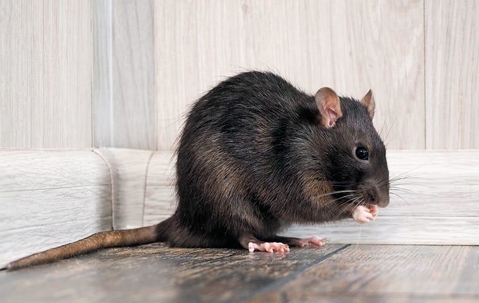We’ve heard just about every question under the sun that relates to pests, and our expert guidance can provide you with all you need to know about proper control and mitigation. Chances are, you’ve probably wondered some of these questions yourself, and if you suspect an infestation is forming, it’s important to act fast. Here are some of the most common questions asked about a very common pest: roof rats.
How Do Roof Rats Get In?
Roof rats get their name from the fact that they like to make their nests in high places, like the inside of attics. As such, they are adept climbers, able to quickly scale walls and tree limbs if provided enough purchase. But they can enter the home in any number of ways. Holes found in the foundation or exterior of the home, faulty shingles in the roof, even loose windows or frames that can be accessed from trees -- all are potential entry points for roof rats in Tracy homes.
How Can You Tell If You Have Roof Rats?
Rodents of all kinds are good at hiding from big animals, and that includes people. As such, you’re more likely to encounter the signs of an infestation than you are to spot a rat itself. Their droppings and brooding areas create foul odors that permeate a property, which is even worse when they choose to shack up inside of vents that carry these smells all over. Their incessant gnawing on hard household surfaces leaves marks all over wood and electrical wiring. When all is quiet, you may even hear the scratching sounds of a rat pack scrabbling through the walls.
Are Roof Rats Dangerous?
While rodents tend to only bite people and pets when they feel threatened, bites do happen and can lead to the transmission of serious things like parasites and rabies. But even just the presence of rats in a home or business can expose people to dangerous diseases that rats are known to carry. Some of the worst outbreaks in history, including the bubonic plague, are attributed to rats. Even if they don’t carry a sickness themselves, wild rodents often carry fleas and ticks, which can carry their own host of diseases.
What Do Rats Hate?
Rats prefer dark, dank places to hide and nest, so they avoid areas that are too exposed or unprotected. They are also foragers, looking for tiny crumbs or pools of moisture to snag a nibble or swig from. As such, making your home less attractive to rats looking for a new place to infest will help make your property loathsome enough to avoid a rodent infestation.
Why Do I Have Roof Rats?
Rats move inside for three main reasons: food, water, and shelter. As the weather chills or grows wet, warm-blooded rodents must seek shelter from the elements. But rats can be driven to a property at any time of the year if they detect easy sources of food. Improper food and trash storage can provide a treasure trove for foraging rodents, and even the smallest crumbs and spills left in hard-to-reach places can provide enough sustenance to encourage pests to move in.
How Do You Get Rid Of Roof Rats? (Call Pro Active Pest Control!)
Basic property maintenance and housekeeping can put you ahead on pest prevention, but if an infestation is already happening it’s best to turn to the professionals. At Pro Active Pest Control, we work with your schedule and budget to quickly and effectively get rid of roof rats. Our trained experts will also advise property owners on ways that they can pest-proof their home or business. So, what are you waiting for? Contact Pro Active Pest Control today to get started on proven rodent control.

